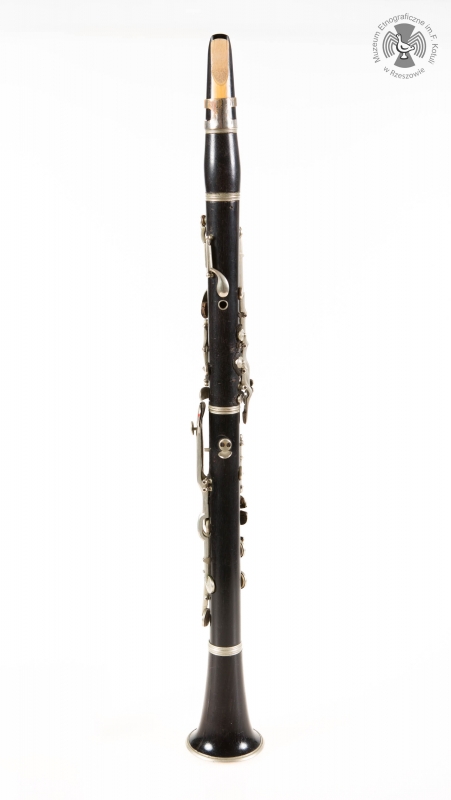clarinet
Excerpt from the film Siła tradycji [The Power of Tradition], produced as part of the project "Muzyczny folklor Podkarpacia - badania terenowe" [The Musical Folklore of Subcarpathia - Field Studies], Franciszek Kotula Ethnographic Museum in Rzeszów, 2014
clarinet
Classification: 4 Aerophones / 42 Wind instruments proper / 422 Reedpipes / 422.2 Reedpipes with single reeds (clarinets) / 422.21 Individual reedpipes with single reeds / 422.211 With cylindrical bore / 422.211.2 With fingerholesProducer: factory-made instrument; made by the AMATI factory in Kraślice, series no. 299406
Date: interwar period?
Village / Town: Kraślice
Region: Carpathian area
Country: Poland
Owner: Franciszek Kotula Ethnographic Museum in Rzeszów
Inventory number: MRE (Strzepek)
Description: body (wood) made of 5 components (mouthpiece, barrel, upper tube, lower tube, bell), mouthpiece slightly narrowing towards a so-called "beak", supplied with a metal mechanism to mount the reed (cane); German keywork, incomplete; the instrument was stored in a rectangular case, lined with fabric on the inside, latched with two locks
Materials: wood, metal
Inscriptions: MADE IN CZECHOSLOVAKIA / „Amati” / Kraslice / Bb / 299406
Sound compass, tuning: the B clarinet transposes down two semitones (it sounds a major second lower than the score); in the past, folk bands would rather use the C clarinet (non-transposing clarinet), however these days the B clarinet tends to be preferred
Performance practice: component of folk bands
Catalog card by: Emilia Jakubiec-Lis / Zbigniew J. Przerembski
<< Back










